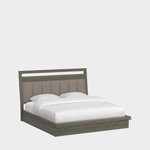questions about grass and soil
17 years ago
Related Stories

GARDENING GUIDESHow to Pick a Mulch — and Why Your Soil Wants It
There's more to topdressing than shredded wood. Learn about mulch types, costs and design considerations here
Full Story
GARDENING GUIDESHow to Stop Worrying and Start Loving Clay Soil
Clay has many more benefits than you might imagine
Full Story
GARDENING GUIDESGardening Solutions for Heavy Clay Soils
What’s a gardener to do with soil that’s easily compacted and has poor drainage? Find out here
Full Story
FARM YOUR YARDHow to Get Good Soil for Your Edible Garden
The nutrients in your soil feed the plants that feed you. Here are tips on getting it right — just in time for planting season
Full Story
GARDENING GUIDESHouzz TV: Make a Worm Bin for Rich Soil and Happy Plants
A worm-powered compost bin that can fit under a sink turns food scraps into a powerful amendment for your garden. Here’s how to make one
Full Story
GARDENING GUIDES10 Solutions for Soggy Soil
If a too-wet garden is raining on your parade, try these water-loving plants and other ideas for handling all of that H2O
Full Story
GARDENING GUIDESGardening Solutions for Dry, Sandy Soils
Has your desert or beachy site withered your gardening creativity? Try these ideas for a beautiful, easy-care landscape
Full Story
LANDSCAPE DESIGNGreat Design Plant: Lively Fountain Grass Thrives Just About Anywhere
Enjoy fountain grass for its exuberant form, long-lasting color and texture for borders and more
Full Story
GARDENING GUIDESNew Ways to Think About All That Mulch in the Garden
Before you go making a mountain out of a mulch hill, learn the facts about what your plants and soil really want
Full Story
GARDENING GUIDESNo-Regret Plants: 5 Questions Smart Shoppers Ask
Quit wasting money and time at the garden center. This checklist will ensure that the plants you're eyeing will stick around in your yard
Full StorySponsored
Your Custom Bath Designers & Remodelers in Columbus I 10X Best Houzz






austinwildflowerOriginal Author
bpgreen
Related Professionals
Rancho Cordova Landscape Architects & Landscape Designers · Taylorsville Landscape Architects & Landscape Designers · Burien Landscape Contractors · East Lake-Orient Park Landscape Contractors · Fort Worth Landscape Contractors · Medford Landscape Contractors · Pleasant Grove Landscape Contractors · Vancouver Landscape Contractors · Hayward Driveway Installation & Maintenance · Cedar Hill Swimming Pool Builders · Palos Verdes Estates Swimming Pool Builders · West Chester Swimming Pool Builders · Carmichael Fence Contractors · Silver Spring Fence Contractors · Winnetka Fence Contractorsdchall_san_antonio